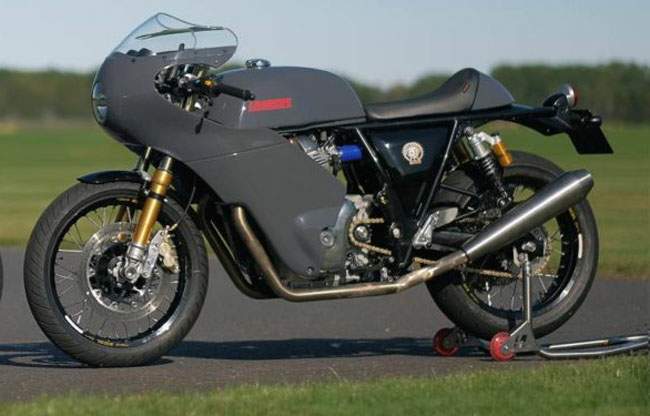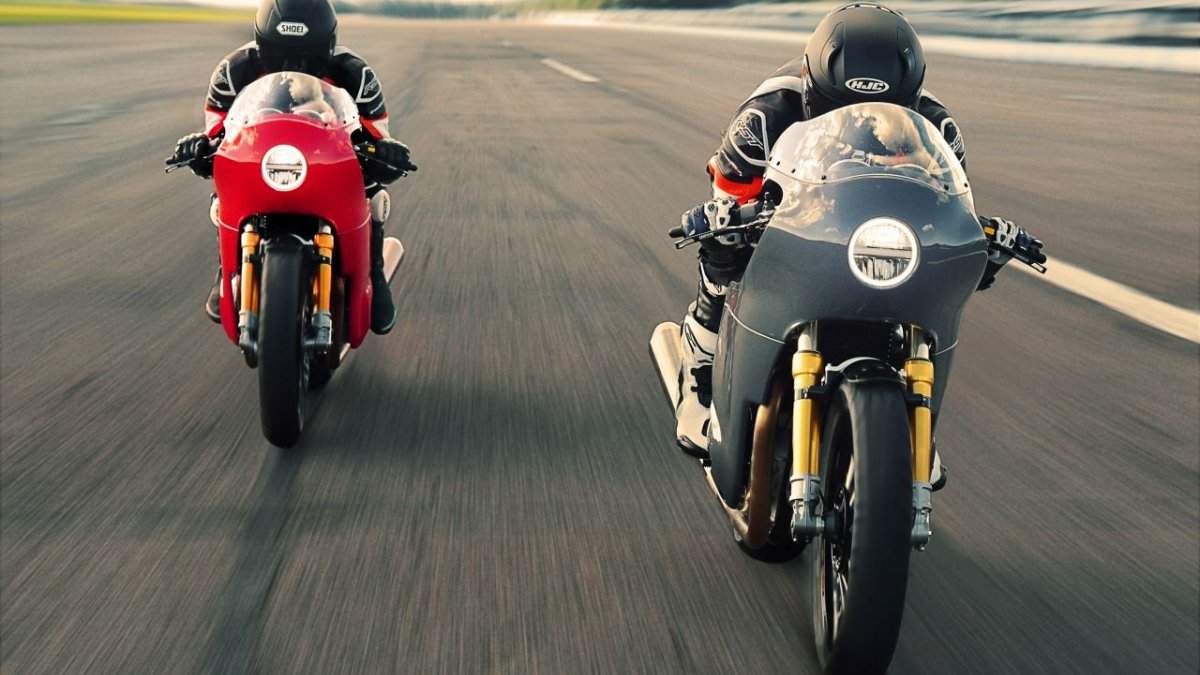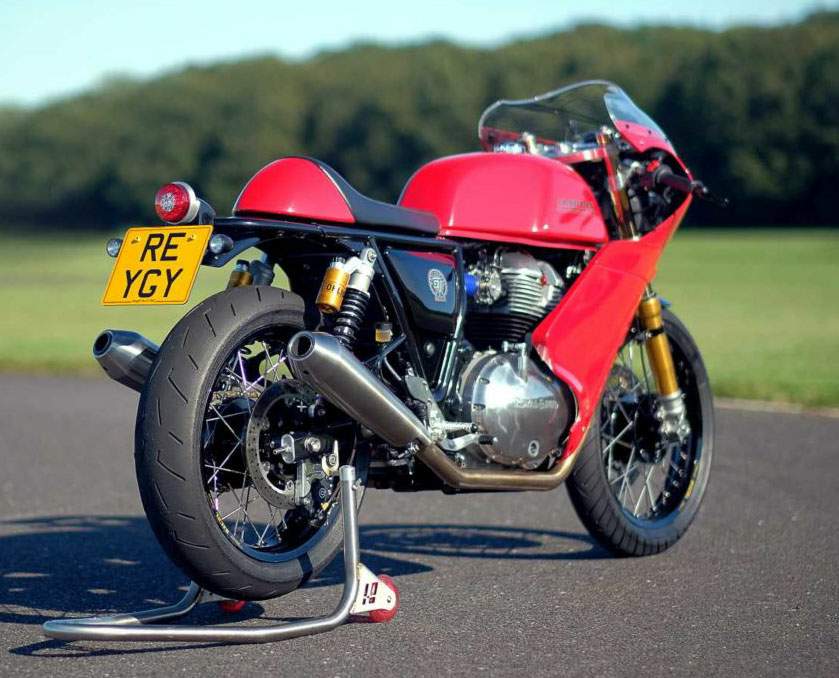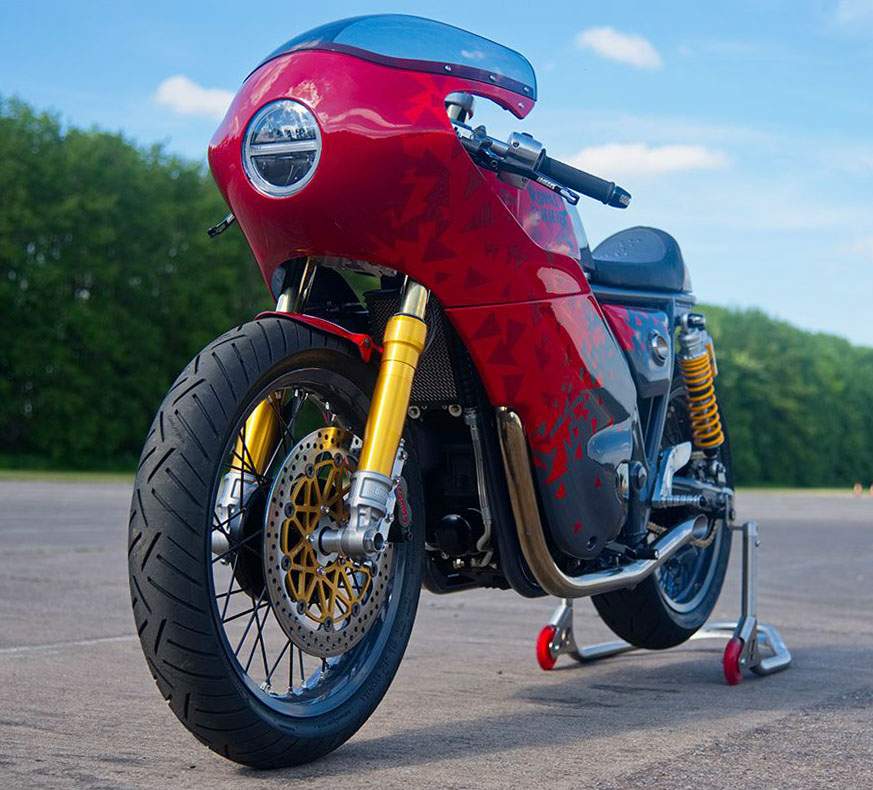
|
|
|
|
|
|
Classic Bikes
Custom Bikes
Individual
Racing Bikes AJP
AJS
Aprilia
Ariel
Avinton / Wakan
Bajaj
Benelli
Beta
Bimota
BMW
Brough Superior
BRP Cam-Am
BSA
Buell / EBR
Bultaco
Cagiva
Campagna
CCM
CF Moto
Combat Motors
Derbi
Deus
Ducati
Excelsior
GASGAS
Ghezzi Brian
Gilera
GIMA
Harley Davidson
Hero
Highland
Honda
Horex
Husaberg
Husqvarna
Hyosung
Indian
Jawa
Kawasaki
KTM
KYMCO
Laverda
Lazareth
Magni
Maico
Mash
Matchless
Mondial
Moto Guzzi
Moto Morini
MV Agusta
MZ / MuZ
NCR
Norton
NSU
Paton
Peugeot
Piaggio
Revival Cycles
Roland Sands
Royal Enfield
Sachs
Sherco
Sunbeam
Suzuki
SWM
SYM
Triumph
TVS
Ural
Velocette
Vespa
Victory
Vincent
VOR
Voxan
Vyrus
Walt Siegl
Walz
Wrenchmonkees
Wunderlich
XTR / Radical
Yamaha
Zero
Video
Technical
Complete Manufacturer List
|
Royal-Enfield ‘Nought Tea GT’ |
| . |
The ‘Nought Tea GT’ is an in-house café racer-style custom bike designed and built by a select few excitable Royal Enfield engineers at their Bruntingthorpe-based Technology Centre – a culmination of month’s worth of work involving Royal Enfield-owned, Harris Performance – legendary race engine tuners and parts manufacturer.
“We try to approach all of our builds with a bit of humour, motorcycling’s about having fun,” says a beaming Adrian Sellers, Group Manager (Industrial Design), Royal Enfield.
“Lester Harris loves his tea,” adds Sellers, talking about the name of the bike. But it’s been more than just a labour of love for the team involved in the project. “We want to show what we can do with our 650GT without having to conform with homologation and emission regulations, that customers can take it to another level”
Lester Harris said: “Our function with Royal Enfield these days is to work with the design engineers, the styling guys and the test team and help them develop a better motorcycle. We’ve been involved in racing for 40 years developing bikes, suspension and chassis and we looked at every little feature of this bike to improve it a little bit from the tyres, wheels, forks and we even made our own adjustable triple clamps which allow you to move the forks backwards and forewords allowing you to adjust the trail where the bike either turns easily or is stable and we’ve been trying to find a balance. Unless you’ve actually done this (customising a bike) you can’t appreciate how much work goes into it!”

When on the workbench at Harris Performance, the original Continental 650 GT had its front forks, calliper, brakes and triple clamps replaced with the likes of Ohlins and Brembo components, as well as new rims laced on to the hubs and different tyres. The team then had to calculate the dimensions for the fork yokes which are adjustable for off-set and enabled the team to go testing and, if required, change the steering characteristics by changing the inserts that fit into the top and bottom yoke.
Directly underneath the seat unit are the eye-catching inlet tubes going onto the throttle bodies. The team removed the stock pipes and gave them a new radius, bend angle and even a typically custom-style slash cut exit. The ergonomics of the bike were altered too with different handlebars so the crew could fine tune the riding position as well as new foot plates that are further back than the standard bike, with three positions for the pegs. The seat was amended and the sub-frame cut to match the shape of the seat. Finally, they laced a wider rim onto the stock hub allowing for to run a bigger tyre and also CNC machined a component to change the wheel adjusting mechanism, with a new axle.
“It’s what we do. Taking a stock bike, analysing the bike and looking at areas to improve it,” said Harris.



|
Any corrections or more information on these motorcycles will be kindly appreciated. |